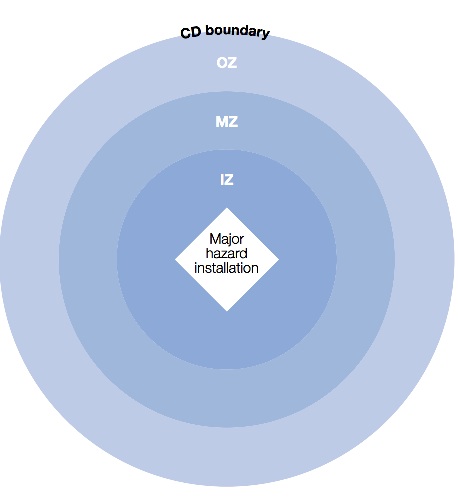 With the recent catstrophe/tragedy in West, TX the politicians have been none stop in calling for more regulations to stop another such accident. I have become senical in my aging process and have just about come to the conclusion that NO LAW can fully prevent another such tragedy; especially one written by lawyers in Washington, DC! But the one common question that is being asked is “How did so many homes, schools, and care facilities come to be built in such close proximity to such a facility”? It is a great question and the answer to which will play a major contributing factor in this accident. But we are not the first nation to be faced with this question and our friends “across the pond” have already paved a path for us to follow… if we are so bold to as actually take action to protect communities. In the U.K. they call it “Land Use Planning” (LUP) and they even have software that community leaders can use to examine the risk of allowing a “high risk industry” into a community or allowing a community to develop in the shadow of a high risk facilty. They call this PADHI (planning advice for developments near hazardous installations) and it is the name given to the methodology and software decision support tool developed and used in HSE. It is used to give land use planning (LUP) advice on proposed developments near hazardous installations. During 2006/07, the software decision-support tool, known as PADHI+, was provided to planning authorities (PAs) to enable them to consult HSE for advice online.
With the recent catstrophe/tragedy in West, TX the politicians have been none stop in calling for more regulations to stop another such accident. I have become senical in my aging process and have just about come to the conclusion that NO LAW can fully prevent another such tragedy; especially one written by lawyers in Washington, DC! But the one common question that is being asked is “How did so many homes, schools, and care facilities come to be built in such close proximity to such a facility”? It is a great question and the answer to which will play a major contributing factor in this accident. But we are not the first nation to be faced with this question and our friends “across the pond” have already paved a path for us to follow… if we are so bold to as actually take action to protect communities. In the U.K. they call it “Land Use Planning” (LUP) and they even have software that community leaders can use to examine the risk of allowing a “high risk industry” into a community or allowing a community to develop in the shadow of a high risk facilty. They call this PADHI (planning advice for developments near hazardous installations) and it is the name given to the methodology and software decision support tool developed and used in HSE. It is used to give land use planning (LUP) advice on proposed developments near hazardous installations. During 2006/07, the software decision-support tool, known as PADHI+, was provided to planning authorities (PAs) to enable them to consult HSE for advice online.
What is LUP & PADHI and what does it have to do with West Fertilizer?

